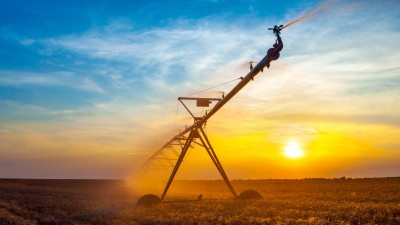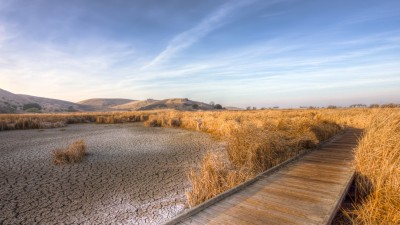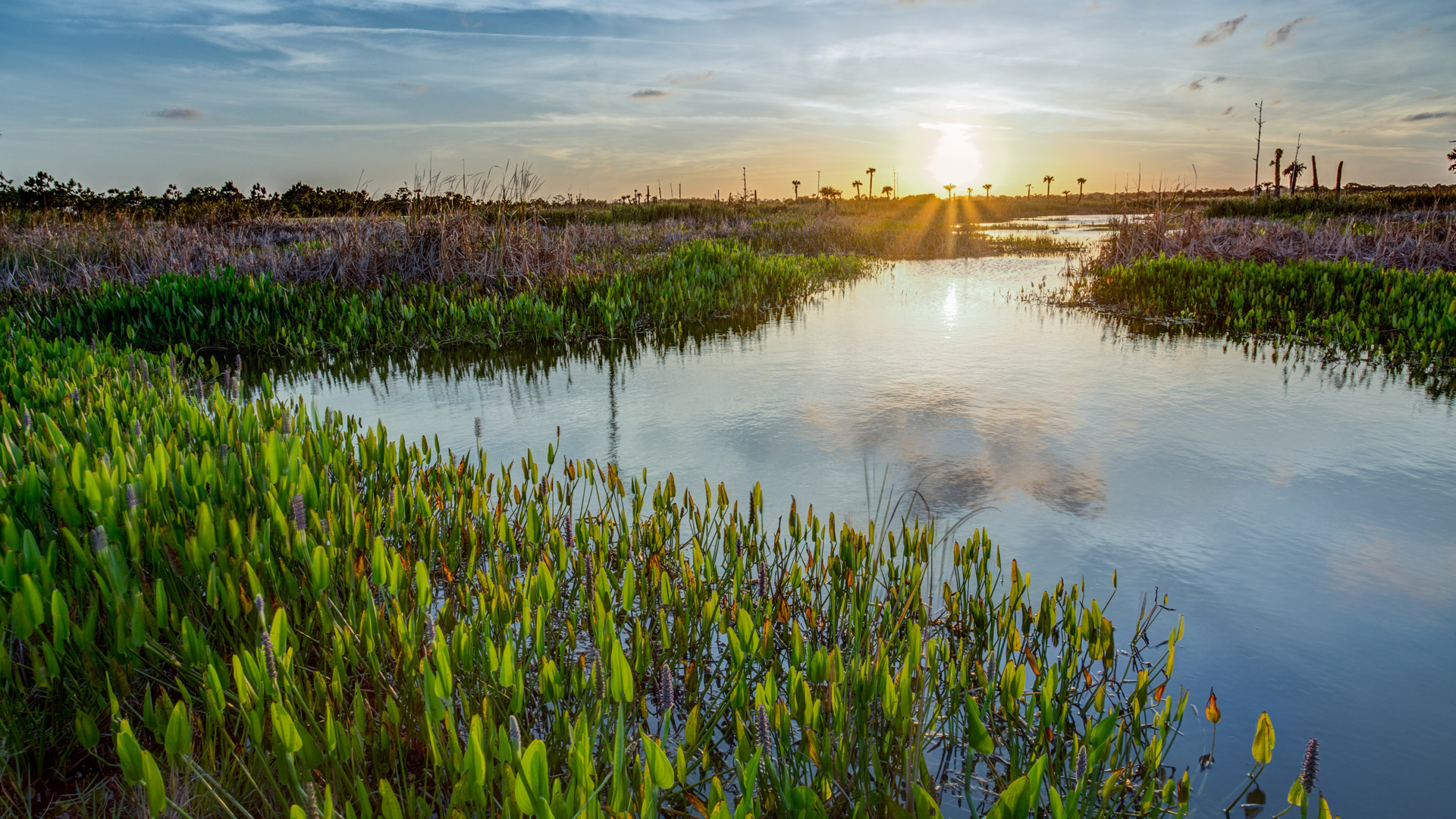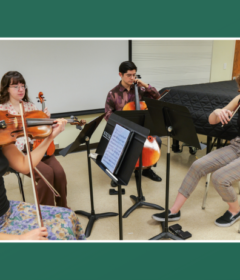Keeping the Well from Running Dry
by Andy Butcher
Surrounded by sea, speckled with lakes and springs like a Jackson Pollock painting, and boasting one of the highest annual rainfalls in the country, Florida would not seem to lack water.
But that is the critical case when it comes to the fresh, usable kind.
“It’s not a crisis yet, but everyone sees that in the near future it is going to be,” says leading environmental lawyer Clay Henderson, a Stetson alumnus and adjunct professor. “We are on a collision course between a growing population and a limited supply of water, and at some point it all has to come to a head.”
Consuming around a billion gallons of water every day — roughly the equivalent of 5,000 average-sized, domestic swimming pools — Florida offers media-friendly examples of the consequences of over-use. It’s the home of threatened Everglades, jeopardized wintering waters for manatees, and sinkholes that suddenly swallow homes, vehicles and streets.
National Concern, Local Action
But Florida is not alone. Parts of California have been struggling with drought in recent times, as have regions of Texas and Georgia. And the problem is not limited to dry, desert-like places you might expect to have to deal with water shortages: a 2012 report from the Environmental Hydrology Laboratory at the University of Florida identified unlikely Lincoln, Neb., as the third most-vulnerable city in the country for water shortage.
Growing awareness of the looming national emergency has prompted research and action over the last decade. However, a 2014 report to Congress by the United States Governmental Accountability Office found that despite efforts, 40 of 50 state water managers said they expected shortages in some portion of their states in the next 10 years.

Clearly, more needs to be done, and Stetson aspires to play a key role in helping provide some of the answers through its new Institute for Water and the Environment. Drawing on multidisciplinary expertise, the initiative is intended to catalyze a three-pronged response to the challenge that combines collaborative research, policy development, and public education.
“We hope to do no less than influence the development of public policy in regard to water in the state of Florida,” says Karen Ryan, Ph.D., dean of the College of Arts and Sciences.
Stetson may be uniquely positioned for the task — geographically, academically, politically and experientially. With its campus just a few miles from the St. Johns River, a main water source for the region that was included in 2008’s list of the most endangered rivers in the United States, the university is close to 30 water-related beauty spots.
That proximity has fostered a rich history of associated research, from water quality testing to water and wildlife studies. Faculty and students have provided vital data for water management authorities. The environmental concern has also been translated into campus action: in-house sustainability measures have seen Stetson achieve a high level of water reuse.
A Complex Problem
In some ways, the founding of the institute merely gives a name to what Stetson has already been doing quietly. But those involved also believe that its creation will crystallize and catalyze more action by bringing a deliberate focus to an issue most people are unconcerned about as long as their faucet works when they turn it on.
“No one else is really stepping up to the plate,” says Wendy Anderson, Ph.D., professor and chair of Stetson’s Environmental Science and Studies. “We seem to be the only one eager and ready to do it.” That may be because “water may well be the most complex problem in Central Florida today,” according to Henderson. “If this were easy, someone would have already done it.”

First, there are the many interwoven reasons for the water shortage. Wasteful use. Building development. Climate change. Energy demands. Pollution. Population growth: not only Florida’s 19 million residents, but as Henderson points out, also the 100 million or so annual tourists “who like to come here and take a shower every morning.”
Then there are the practical and political complexities of coming up with an answer. Aging infrastructure. Commercial interests. Policy issues: by way of illustration, Ryan notes that hotel use of water in Florida isn’t taxed, while it is in New York City.
Next come political concerns, with the many different groups charged with managing water for their communities agreeing that something needs to be done, but holding different ideas on what that should be especially when it comes to access to shared, and limited, water sources.
The institute has already started work in this area. Its new banner was quietly unfurled a year ago, bringing together representatives of water agencies across the region for a workshop on issues of shared concern. In late February, it will host newly elected State representatives for a special briefing on water issues.
Creating Awareness
While currently for the most part a meeting of minds, bringing together all Stetson’s key water-related thinkers, the institute is intended to be a meeting place, too, in due course. There are hopes of developing a home on Stetson land at Lake Beresford, shared with the rowing club, which could provide research space and host public awareness events.
Anderson sees visual and performing arts as a powerful future vehicle for raising the profile of water issues. But that is no small objective: because we take water so much for granted, bringing the issue to public attention is “a huge challenge for the water industry in the U.S.,” says Kirsten Work, Ph.D., associate professor of biology.
The vision for the institute goes beyond state lines, hopefully providing ideas for other parts of the U.S. When it comes to tackling water and other environmental issues, Florida is “fairly ahead of the rest of the country just because we have to deal with a lot of these issues sooner,” says Henderson.
There is an international aspect, too.
“Although we value water so little, it is the most important resource we have on the planet,” says Work. “Unless we get a handle on it, we are going to face some serious issues.”

While water shortages are largely a question of inconvenience in parts of America, around the world they are a matter of life and death. One in six people on the planet lives where water is scarce. And, like here, it’s not just in the deserts. As home to the rain forests, most people would not think that Brazil has a water problem, but deforestation and urban growth has forced rationing in large cities like Sao Paolo.
Finding ways to store rainwater and desalinate seawater on a large scale may be part of the planet’s long-term answer. But the challenge is not just the amount of water we have, but how we use it.
Unwise, water-heavy agricultural methods strain supply in some parts of the world, says Katherine Alfredo, a postdoctoral research scientist at the Columbia Water Center, part of the Earth Institute at Columbia University. Meanwhile, a July 2014 report by the School of Business and Social Sciences at Denmark’s Aarhus University warned that unless the demand for water to produce energy is eased, by 2040 there would not be enough to drink as well.
How we use water in the U.S. may not seem relevant to the needs in, say, sub-Saharan Africa, but modeling good practices to the international community is essential if problems in other parts of the world are to be addressed, Alfredo asserts. “You emulate who is in front of you on the development landscape.”
So, like a stone dropped into a well-maintained pond, Stetson’s Institute for Water and the Environment could have a ripple effect far beyond Central Florida.
Research at Blue Spring: In this video, Dr. Melissa Gibbs, director of Stetson University’s Aquatic and Marine Biology program, discusses the leadership role that faculty and student researchers have played in the study of the biology, fish and manatees in the freshwater spring.


